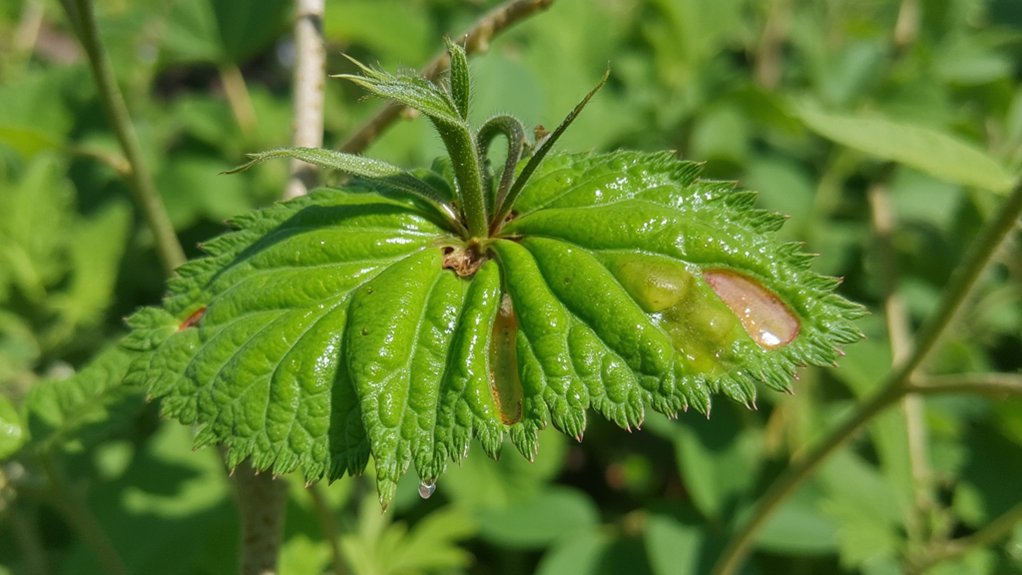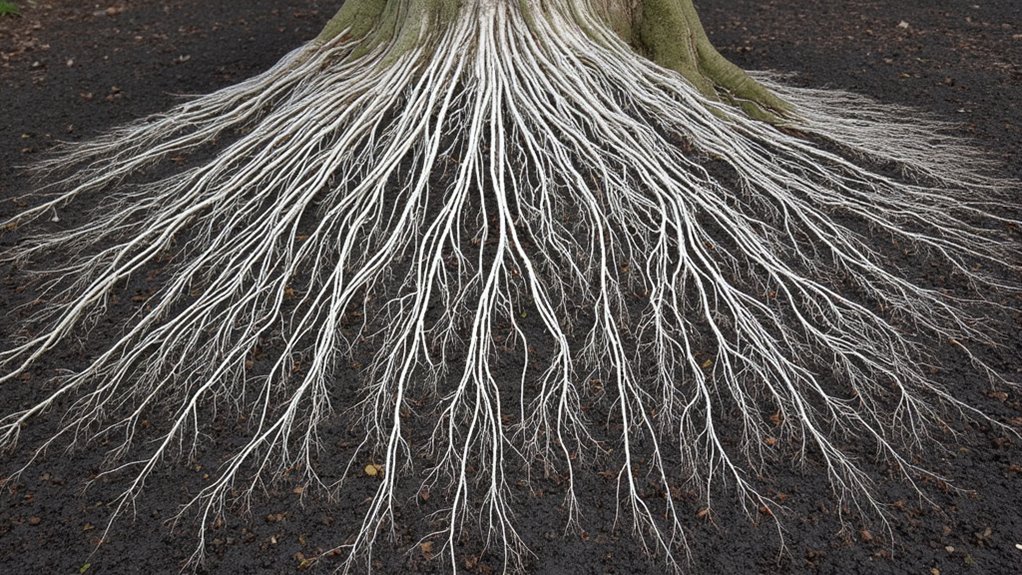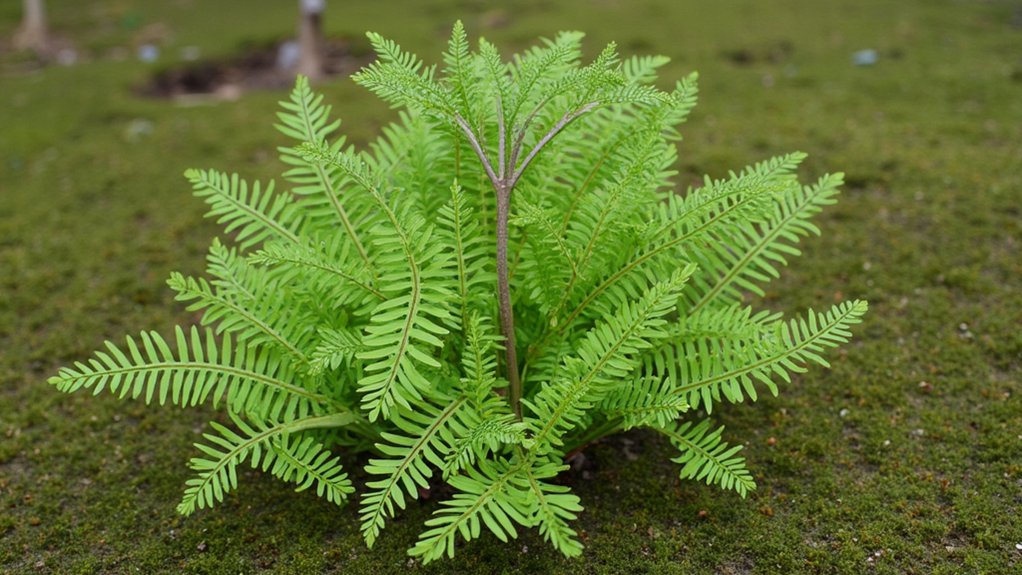You might think plants are the strong, silent type, but they’re actually quite chatty in their own unique way. When you walk through a forest or garden, you’re surrounded by an invisible communication network that’s constantly buzzing with activity. Through chemical signals, fungal connections, and electrical impulses, plants share essential information about threats, resources, and environmental changes. Let’s explore how this fascinating biological internet operates beneath the surface.
Contents
Chemical Signals: Nature’s Warning System

When you walk through a grove of trees, you’re stepping into an invisible world of chemical conversations. Trees release specific compounds called volatile organic chemicals (VOCs) into the air and soil to communicate with neighboring plants.
You’ll find that when insects attack a tree’s leaves, it’ll release methyl jasmonate, a warning chemical that travels up to 100 feet. This signal prompts nearby trees to start producing protective compounds in their leaves, creating a natural defense system.
Through their roots, trees also send chemical alerts through underground fungal networks, sharing nutrients and danger signals with their plant neighbors within minutes of detecting a threat.
The Underground Fungal Network

Deep beneath the forest floor lies an intricate network of fungal threads called mycorrhizal networks, connecting trees and plants in a vast underground web. You’ll find these fungal threads, or hyphae, linking hundreds of plants across areas spanning up to 30 acres.
When you examine these networks closely, you’ll discover they’re transferring essential nutrients, water, and carbon between plants. They’re also sharing information about threats, like incoming pests or diseases. A single teaspoon of healthy soil contains up to 7 miles of fungal connections, creating nature’s own internet, which scientists often call the “Wood Wide Web.”
Touch and Mechanical Responses

Moving from the fungal communication underground, plants also respond remarkably to physical touch above the soil. You’ll notice that when you brush against a sensitive plant (Mimosa pudica), its leaves fold within seconds, protecting itself from potential threats.
Plants don’t just react defensively – they’re actively sensing their environment. When you touch a vine’s tendrils, they’ll begin curling within 20 minutes, responding to mechanical stimulation through a process called thigmotropism. Similarly, seedlings adjust their growth patterns when exposed to wind, developing thicker stems and shorter stature.
This touch-based communication helps plants survive predators, find support structures, and adapt to environmental stresses.
Electrical Signals Between Plants
Just as neurons fire electrical impulses in our brains, plants generate and transmit electrical signals between their cells and tissues. You’ll find these bioelectrical signals traveling at speeds of 1-3 centimeters per second through a plant’s vascular system, carrying essential information about environmental changes and threats.
When you examine a plant’s electrical communication, you’ll notice two main types: action potentials, which are rapid voltage changes lasting milliseconds, and variation potentials, which are slower, longer-lasting signals. These electrical messages help plants respond to everything from touch and temperature to pest attacks and drought conditions.
Survival Strategies Through Plant Communication
You’ll notice that plants don’t just sit there waiting to be eaten. They’ll release volatile compounds that repel insects and alert nearby plants to boost their defenses. In grasslands, when a giraffe starts munching on an acacia tree, it’ll release ethylene gas within minutes, prompting other acacias to produce toxic chemicals.
